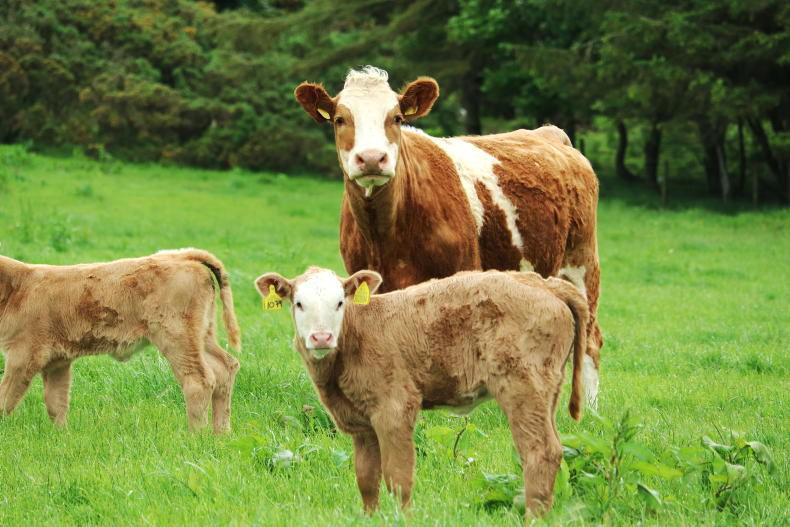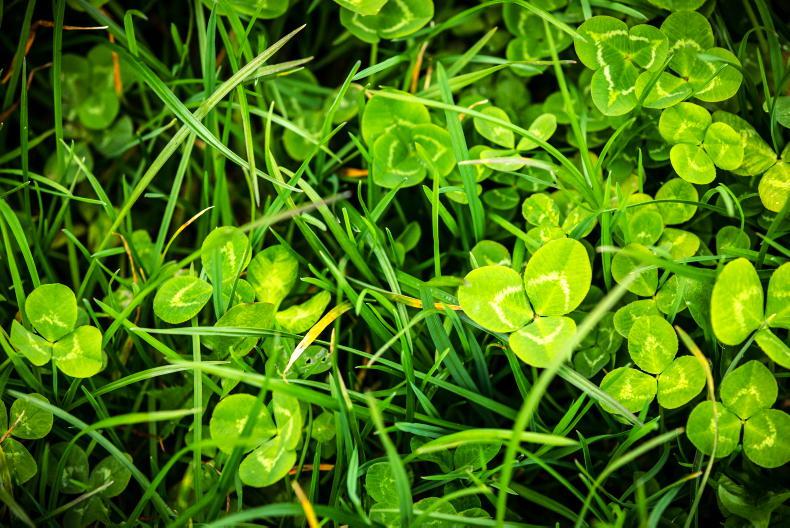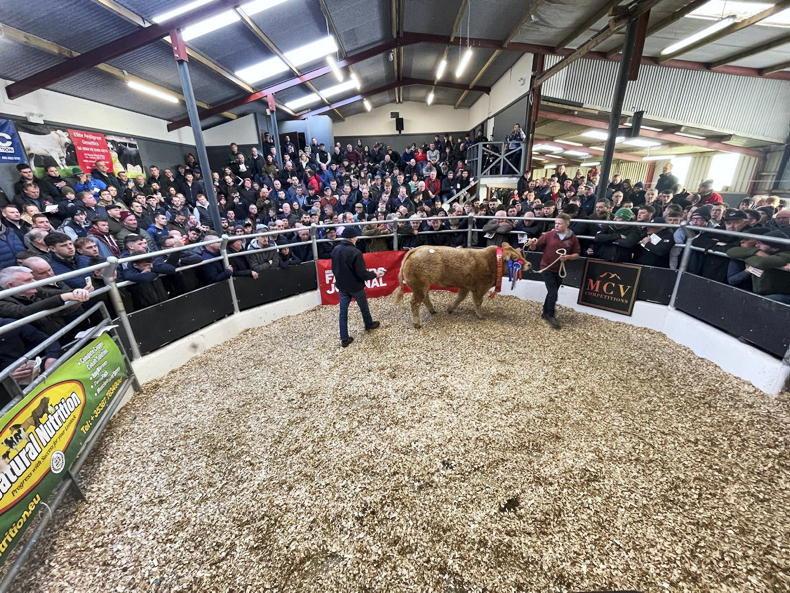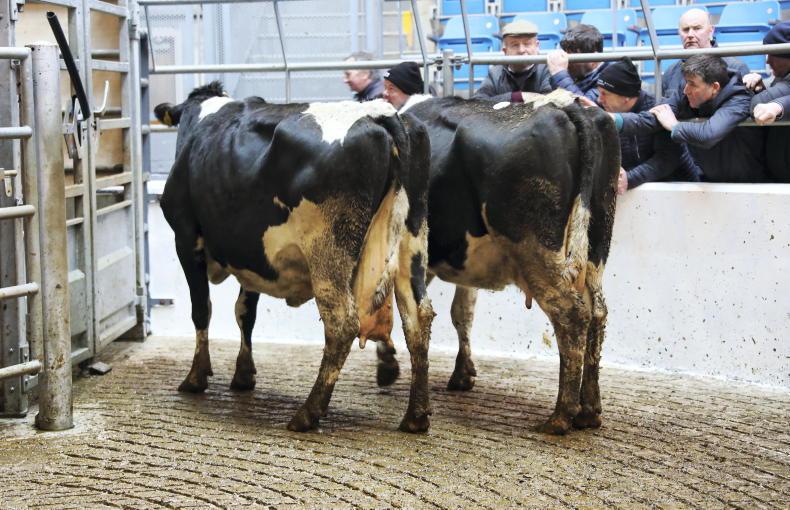Changeable weather is forecast for the week ahead and this will increase the risk of grass tetany in spring-calving cows that are suckling calves at grass.
Herd owners should be keeping a close eye on lactating cows for early signs of tetany. But by following these five steps, the risk posed to cows is greatly reduced.
Magnesium supplementation
Providing cows with supplementary magnesium is the most common method of preventing tetany on suckler farms.
There are various forms of magnesium supplementation on the market and there are pros and cons to them all, depending on cost, practicality of using them and how long they provide cover for.
Lick buckets are the most common method of supplementation on farms, and as a rule of thumb, provide one lick bucket for every 10 cows.
However, not all cows will use lick buckets, so a back-up form of mineral supplementation is often a good idea.
Concentrate feeding for higher risk animals
In suckler herds with high milk-producing cows, these animals will be at greater risk of tetany. The same applies to animals under nutritional stress, such as thinner cows, first calved heifers and cows suckling twins.
During high risk periods, these animals can benefit from feeding 1kg to 2kg/day of a high magnesium ration to increase supplementation rates.
Avoid grazing after slurry or high potash fertilisers
Avoid grazing cows in paddocks that have been recently dressed with slurry or a high potash fertiliser.
Potash (K) inhibits the uptake of magnesium in grass, which limits intakes of the mineral as cows graze.
Leave at least three weeks before grazing paddocks dressed with a high potash fertiliser to reduce the risk of tetany in lactating cows.
Offer a fibre source
Spring grass is low in fibre, which means grass is rapidly digested. Offering cows a small quantity of hay, haylage or straw every day can slow down digestion and allow more time for the magnesium in forage to be absorbed.
Don’t force cows to clean out paddocks
Where cows are currently at grass, do not force these animals to clean paddocks out tight so early in the year. In spring, there is no risk of rejected grass heading out.
So, grazing tight to the ground is not as important in April when compared to late May or June. Leaving a slightly higher residual will speed up regrowth for the next rotation.
If cows are forced to graze out paddocks during a high risk period for tetany, these animals will come under nutritional stress and are prone to developing problems.
Therefore, keep cows moving to fresh grass before covers in grazed paddocks get too low.
Read more
Watch: common issues in the calf-rearing shed
Beef Management: coccisiosis, delayed turnout and advice on fertiliser
Changeable weather is forecast for the week ahead and this will increase the risk of grass tetany in spring-calving cows that are suckling calves at grass.
Herd owners should be keeping a close eye on lactating cows for early signs of tetany. But by following these five steps, the risk posed to cows is greatly reduced.
Magnesium supplementation
Providing cows with supplementary magnesium is the most common method of preventing tetany on suckler farms.
There are various forms of magnesium supplementation on the market and there are pros and cons to them all, depending on cost, practicality of using them and how long they provide cover for.
Lick buckets are the most common method of supplementation on farms, and as a rule of thumb, provide one lick bucket for every 10 cows.
However, not all cows will use lick buckets, so a back-up form of mineral supplementation is often a good idea.
Concentrate feeding for higher risk animals
In suckler herds with high milk-producing cows, these animals will be at greater risk of tetany. The same applies to animals under nutritional stress, such as thinner cows, first calved heifers and cows suckling twins.
During high risk periods, these animals can benefit from feeding 1kg to 2kg/day of a high magnesium ration to increase supplementation rates.
Avoid grazing after slurry or high potash fertilisers
Avoid grazing cows in paddocks that have been recently dressed with slurry or a high potash fertiliser.
Potash (K) inhibits the uptake of magnesium in grass, which limits intakes of the mineral as cows graze.
Leave at least three weeks before grazing paddocks dressed with a high potash fertiliser to reduce the risk of tetany in lactating cows.
Offer a fibre source
Spring grass is low in fibre, which means grass is rapidly digested. Offering cows a small quantity of hay, haylage or straw every day can slow down digestion and allow more time for the magnesium in forage to be absorbed.
Don’t force cows to clean out paddocks
Where cows are currently at grass, do not force these animals to clean paddocks out tight so early in the year. In spring, there is no risk of rejected grass heading out.
So, grazing tight to the ground is not as important in April when compared to late May or June. Leaving a slightly higher residual will speed up regrowth for the next rotation.
If cows are forced to graze out paddocks during a high risk period for tetany, these animals will come under nutritional stress and are prone to developing problems.
Therefore, keep cows moving to fresh grass before covers in grazed paddocks get too low.
Read more
Watch: common issues in the calf-rearing shed
Beef Management: coccisiosis, delayed turnout and advice on fertiliser










SHARING OPTIONS